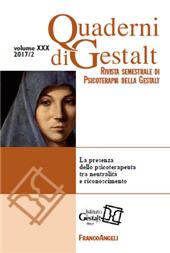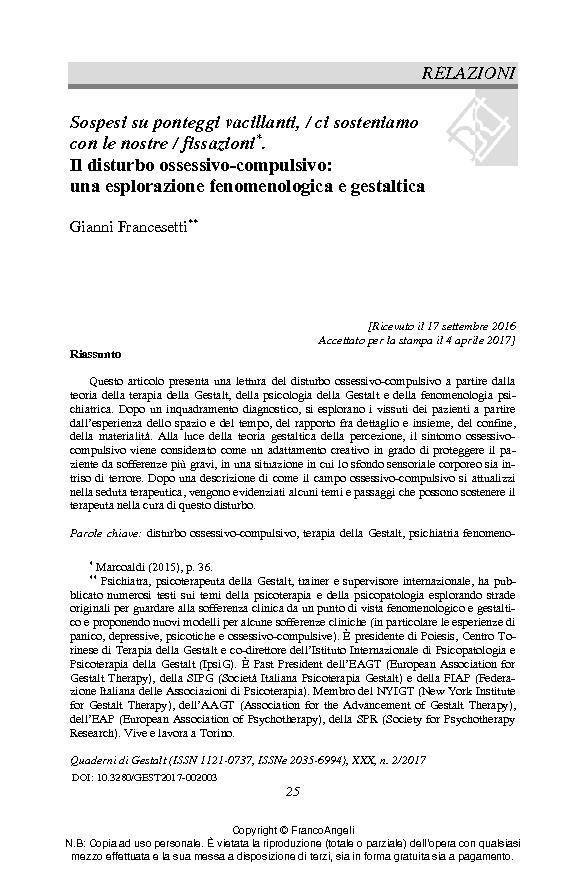Sospesi su ponteggi vacillanti, / ci sosteniamo con le nostre / fissazioni : il disturbo ossessivo-compulsivo : una esplorazione fenomenologica e gestaltica
25-56 p.
Questo articolo presenta una lettura del disturbo ossessivo-compulsivo a partire dalla teoria della terapia della Gestalt, della psicologia della Gestalt e della fenomenologia psi-chiatrica. Dopo un inquadramento diagnostico, si esplorano i vissuti dei pazienti a partire dall'esperienza dello spazio e del tempo, del rapporto fra dettaglio e insieme, del confine, della materialità. Alla luce della teoria gestaltica della percezione, il sintomo ossessivo-compulsivo viene considerato come un adattamento creativo in grado di proteggere il paziente da sofferenze più gravi, in una situazione in cui lo sfondo sensoriale corporeo sia intriso di terrore. Dopo una descrizione di come il campo ossessivo-compulsivo si attualizzi nella seduta terapeutica, vengono evidenziati alcuni temi e passaggi che possono sostenere il terapeuta nella cura di questo disturbo. [Testo dell'editore].
This article presents an approach to obsessive-compulsive disorder based on the Gestalt therapy theory, Gestalt psychology and psychiatric phenomenology. After establishing a diagnostic framework, the experiences of patients are explored, starting from the experience of space and time, of the relationship between details and the whole, of boundaries, and of materiality. In the light of the Gestalt theory of perception, the obsessive-compulsive symptom is framed as a creative adjustment protecting the patient from more severe suffering in a situation in which the bodily sensorial ground is permeated with terror. After describing how the obsessive-compulsive field is aesthetically actualized in therapy, a number of issues are highlighted that can help therapists in their journey with the sufferers. [Publishers' text].
-
Artículos del mismo número (disponibles individualmente)
-
Información
Código DOI: 10.3280/GEST2017-002003
ISSN: 2035-6994
MATERIAS
KEYWORDS
- Disturbo ossessivo-compulsivo, terapia della Gestalt, psichiatria fenomeno-logica, psicologia della Gestalt, percezione, psicopatologia, campo psicopatologico, linguaggio, estetica
- Obsessive-compulsive disorder, Gestalt therapy, phenomenological psychiatry, Gestalt psychology, perception, psychopathology, psychopathological field, language, aes-thetics



